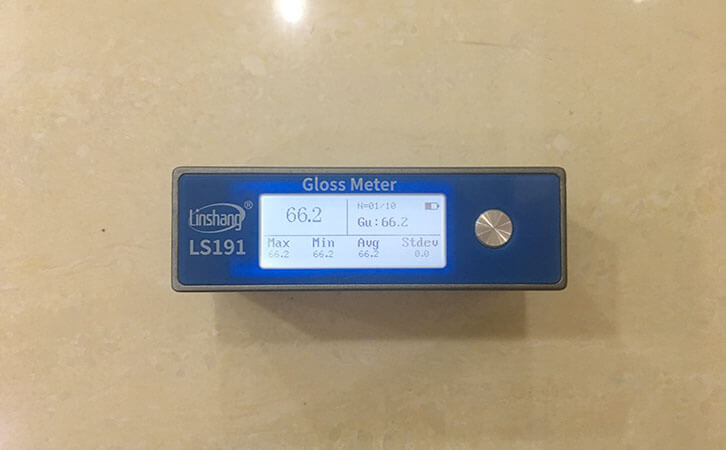Principle and Function of Ceramic Portable Gloss Meter
Ceramics are made of various natural minerals. Gloss is a characteristic of the ceramic glaze surface. The gloss directly affects the appearance quality of ceramics. Some ceramic products have good quality indicators but glaze. The gloss is not good. The gloss of ceramics can also be detected using specialized instruments. This article will briefly introduce the principle and function of the ceramic portable gloss meter.
When the light is irradiated on the ceramic glaze, the mirror reflection ability (reflective power) of different glazes in a certain direction is different due to the different smoothness of the ceramic plane. Therefore, we feel that different ceramic glosses are different, but it is unable for us to use the naked eye to distinguish the nuances of gloss. We can use the ceramic portable gloss meter to measure the specific gloss value, objectively judge the gloss and whether it meets the requirements in the process of production.
The portable gloss meter consists of a white light source lens and receiver that meet certain requirements. The black standard board and the tested samples are respectively irradiated by the light beam with a certain incident angle. The reflected light intensity of the sample and the standard board is measured under a certain receiving condition.
In GBT 15614-1995 daily use ceramic pigment gloss determination method (international standard ISO 2813; 1978 "color paint and varnish - non-metallic paint film 20 degree, 60 degree and 85 degree specular gloss measurement method"). The relative reflectivity of the ceramic to the black glass standard board is multiplied by 100, which is the gloss value of the tested ceramic. If we want to measure the majority of ceramic gloss, we can use the general 60 degree ceramic portable gloss meter. 60 degree geometric angle method is suitable for all ceramics. Measuring the ceramics whose gloss is very high or very low, the 20 degree or 85 degree geometric angle portable gloss meters can also be used.
The 20 degree ceramic portable gloss meter is more suitable for ceramics with higher gloss, that is, those materials whose gloss is higher than 70GU when testing with 60 degree portable gloss meter. 85 degree portable gloss meter is suitable for materials with lower gloss, ie ceramics with a gloss below 30 GU when testing with the 60 degree portable gloss meter.
At present, the universal 60 degree portable gloss meter can test the gloss of all kinds of ceramics, so all measurements can be completed using a 60 degree ceramic gloss meter. We take LS191 ceramic portable gloss meter as an example. From the above figure, the gloss of the current position of the tested ceramic can be read as 66.2 GU.
After that, the current test data can be stored in the database by pressing the button and then move the position for multiple measurements to obtain the gloss value of multiple positions. Through the data statistics at the bottom of the ceramic portable gloss meter screen, we can also judge the uniformity of this ceramic glaze gloss.
